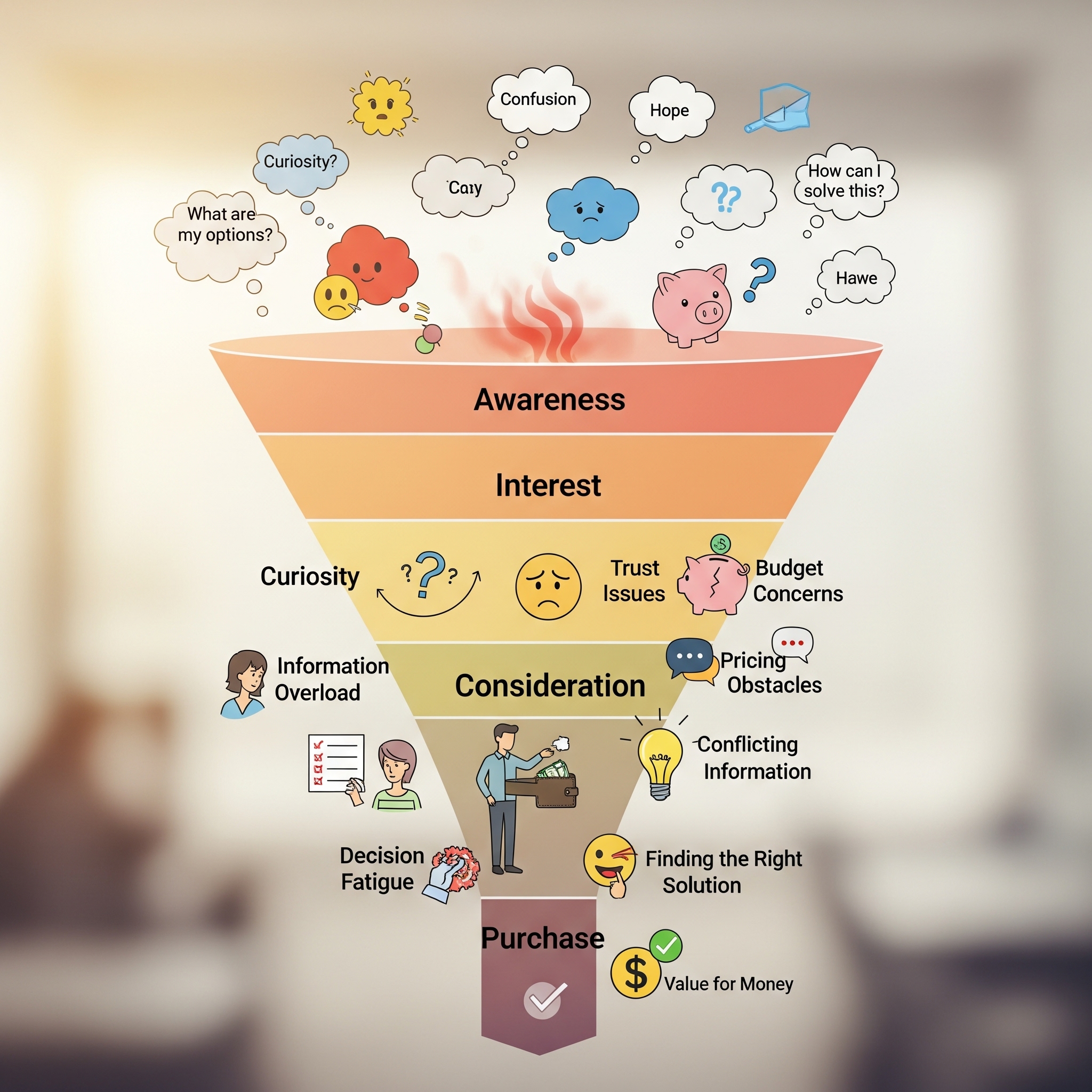The Secret to Boosting Sales: Mastering the Pain Funnel

Selling isn't just about listing features and benefits; it's about connecting with your customer's deepest needs and emotions. The pain funnel is a powerful sales strategy designed to do just that. Instead of focusing on your product, it's a method that helps you uncover the emotional "pain points" that truly drive a customer's decision to buy. By understanding these underlying issues, you can create a personalized and compelling pitch that speaks directly to their needs, making a successful sale far more likely.
Why Emotional Triggers Are the Key to Closing a Sale
People don't just buy with their wallets; they buy with their hearts and then use logic to justify the purchase later. This is the core principle behind the pain funnel. Tapping into these emotional triggers allows you to build a stronger connection with potential customers.
Imagine a parent who needs their air ducts cleaned. They're not just thinking about a clean home; they're worried about their child's allergies. A salesperson who understands this emotional trigger can frame the service not just as a cleaning, but as a way to protect their child's health. This approach is far more impactful and empathetic, significantly increasing the chances of a sale.
A Step-by-Step Guide to Implementing the Pain Funnel
Implementing the pain funnel is a structured process that moves from general questions to deeply personal ones. Here’s how you can use this technique:
-
Start with open-ended questions. Begin by asking broad questions to understand their current situation. For example, "What challenges are you facing with your current service?"
-
Dig deeper. Once they give you an initial answer, probe for more detail. Ask questions like, "How long has this been an issue?" or "What have you tried to do to fix it?"
-
Identify the personal impact. This is where you get to the emotional core. Ask how the problem is affecting their daily life or who else is impacted. Questions like, "How is this impacting your team's productivity?" or "How is this affecting your family?" can be very effective.
-
Explore the consequences of inaction. Help the customer see the urgency of solving the problem. Ask, "What happens if you don't address this now?" This makes the potential negative outcomes real and helps them realize the value of a solution.
-
Present your solution. Only after you have a clear picture of their pain points should you introduce your product or service. Frame your solution as the direct answer to their specific problems, showing how it will relieve their pain.
Real-World Examples in Action
Consider an HVAC company that used the pain funnel to uncover that many customers were concerned about a family member's allergies. Instead of just selling air duct cleaning, they began highlighting the health benefits. This empathetic approach led to a significant increase in add-on sales for those services.
Another example is a salesperson who realized that many of their customers were "frustrated" and "worried" about recurring technical issues. By acknowledging these feelings directly ("I understand how frustrating it is to deal with this repeatedly"), they positioned their solution as a long-term fix and a source of relief, winning the customer's trust and their business.
Tips for Mastering the Pain Funnel
Mastering this technique takes practice, but it's a skill you can continually improve.
-
Practice regularly. Role-playing scenarios with colleagues can help you get more comfortable asking the right questions and thinking on your feet.
-
Seek feedback. After a sales call, get feedback from a mentor or peer. Ask them what worked well and what you could improve on.
-
Always stay customer-centric. It’s easy to slip back into a product-focused mindset, so make a conscious effort to keep your questions and conversation centered on the customer's needs and emotions.
-
Stay flexible. Every customer is different. Be prepared to adapt your questions and approach based on the unique situation and emotional triggers of each person you talk to.
By integrating the pain funnel into your sales process, you'll not only close more deals but also build stronger, more meaningful relationships with your customers.
.png?width=600&height=100&name=White%20NEW%20logo%20Email%20Header%20-%20standard%20(2).png)

